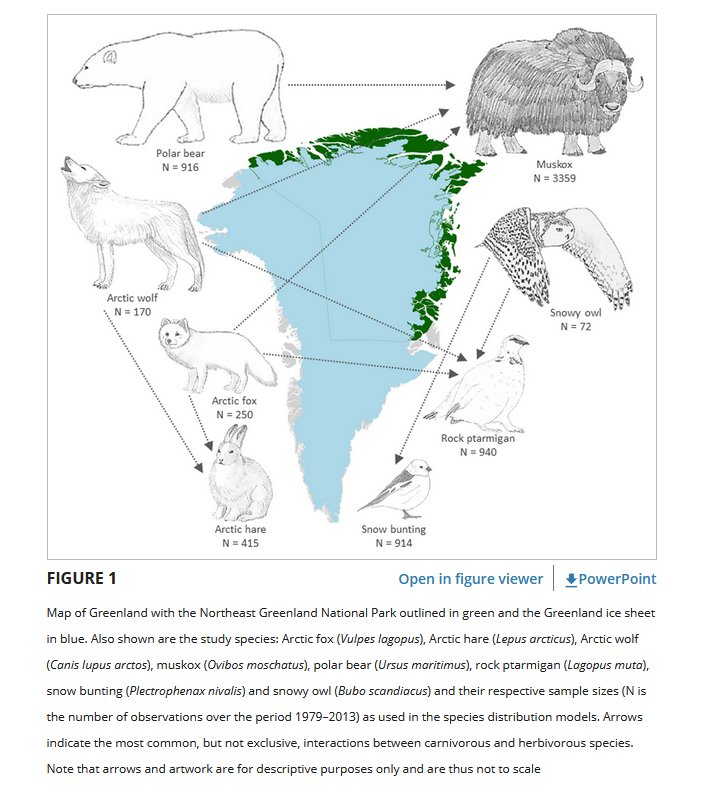Rapid shifts in Arctic tundra species' distributions and inter‐specific range overlap under future climate change
New publication by Floris M. van Beest, Larissa T. Beumer, Asbjørn S. Andersen, Sophia V. Hansson, Niels M. Schmidt.

Abstract:
Aim
The Arctic is one of the planet's most rapidly warming regions, with trends expected to intensify in the future. Projections of shifts in species distributional ranges under future climate change are thus far lacking for most vertebrate species using the Arctic tundra. Our aim was to assess possible climate-induced changes in distributional ranges and inter-specific overlap of an Arctic species assemblage within the world's largest land-based protected area.
Location
During 1979–2013 location data of eight Arctic birds and mammals, Arctic fox (Vulpes lagopus), Arctic hare (Lepus arcticus), Arctic wolf (Canis lupus arctos), muskox (Ovibos moschatus), polar bear (Ursus maritimus), rock ptarmigan (Lagopus muta), snow bunting (Plectrophenax nivalis) and snowy owl (Bubo scandiacus) were collected in the Northeast Greenland National Park.
Methods
The maximum entropy (MaxEnt) algorithm and Schoener's D niche overlap index were used to assess shifts and changes in overlap of species-specific distributions under recent (1979–2013) and future (2061–2080; representative concentration pathways [RCPs] 2.6, 4.5 and 8.5) bioclimatic conditions.
Results
Species distributions were projected to shift northward and upwards across all scenarios, and at higher rates than previously reported. Future distributions were also forecasted to become spatially less clustered and to expand in size for all species. Species-specific shifts in distribution ranges altered inter-specific overlap, most notably by an increase in overlap under scenario RCP 8.5.
